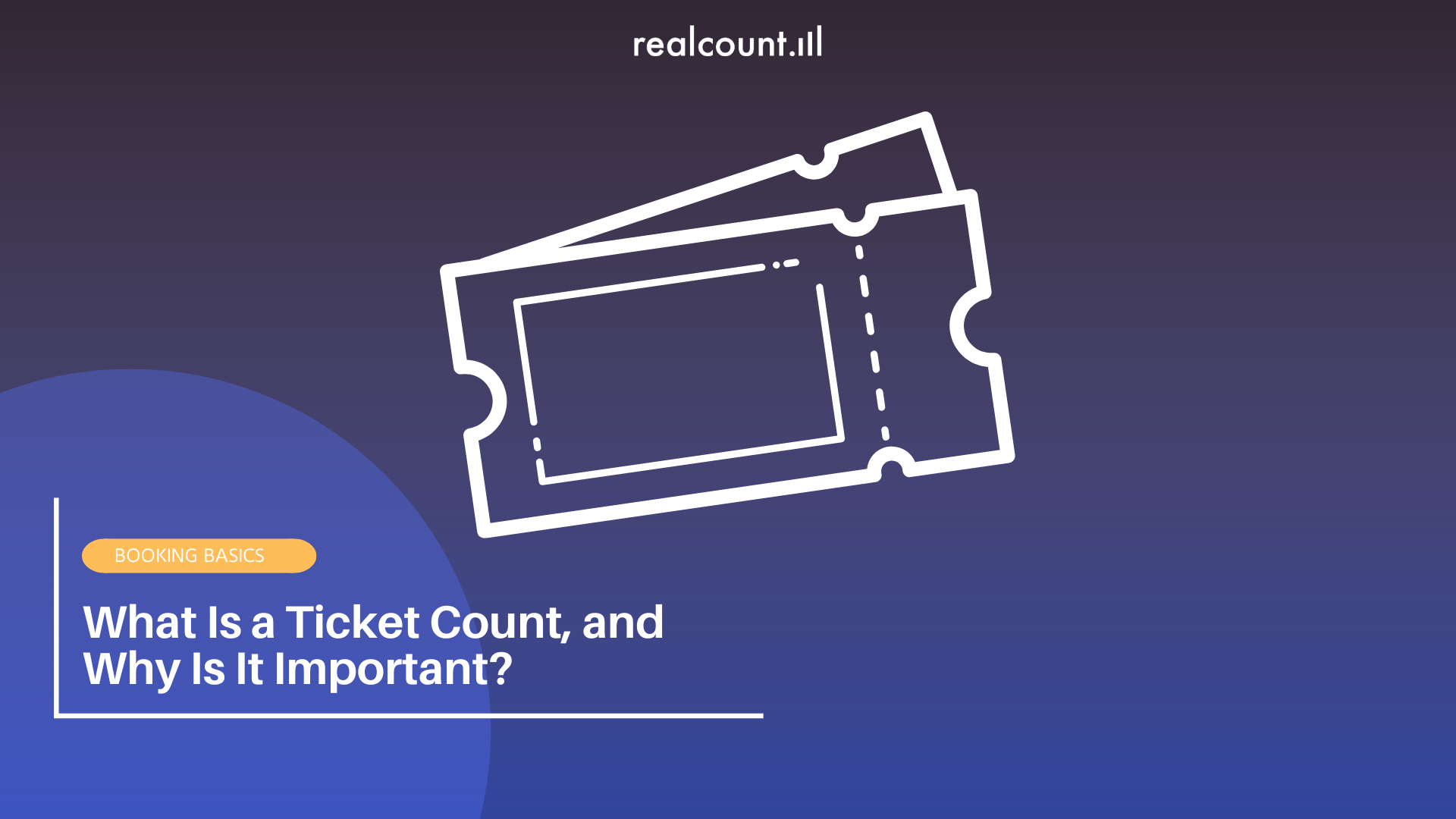Insights
07/07/25
Diana Gremore
What Are Ticket Counts (or Ticket Figures), and Why Are They Important?

What Are Ticket Counts (or Ticket Figures), and Why Are They Important?
At RealCount, we know the foundation of smart touring is rooted in a single question: how many tickets have been sold? Ticket counts—or ticket figures—are the lifeblood of tour planning, revenue tracking, marketing, and so much more. But as anyone in the industry knows, pulling these numbers together across platforms and events is rarely easy.
Let’s break down what ticket counts are, how they’re tracked, and why they’re essential for every stakeholder in the live event ecosystem.
What Are Ticket Counts (or Ticket Figures)?
A ticket count is exactly what it sounds like: the number of tickets sold for a given live event.
These figures are typically pulled from box office reports or ticketing platform dashboards like Ticketmaster, AXS, Dice, or Eventbrite. But accessing that data isn't always straightforward—it can vary based on platform transparency, cadence, and permissions.
For touring teams, one show might span multiple ticketing systems. Multiply that across dozens of dates and you’re suddenly wrangling sales numbers from screenshots, spreadsheets, PDFs, and forwarded emails.
That’s why ticket count reports matter so much—and why they’re often so painful to create.
Why Ticket Counts Matter to Artists, Agents, and Managers
Ticket counts aren’t just data points—they’re insight engines. Here’s how artist teams use them:
Marketing Strategy
Spot soft markets early and redirect promo spend or tighten social targeting before it’s too late.
Revenue Tracking
Most live deals hinge on ticket sales: thresholds, splits, percentages. Having live access to accurate counts helps teams forecast revenue and backend shares.
Tour Planning
From merch quantities to meet-and-greet setup, ticket counts inform every touchpoint of how an artist shows up in-market.
Strategic Adjustments
If a show’s falling short, real-time data means there’s still time to act—update artwork, push a campaign, or make pricing changes.
In most cases, artist teams don’t control where tickets are sold—and even when they do, it’s rarely consistent across a tour. Consolidating these sales into one system isn’t just helpful—it’s necessary.
Why Promoters and Venues Rely on Accurate Ticket Count Reports
For promoters and venues, real-time ticket data drives nearly every operational decision.
Show Settlement
From artist fees to backend splits, ticket counts determine what gets paid out and when.
F&B and Staffing
How many bars to open? How much inventory to order? How many staff to schedule? It all starts with knowing how many tickets have been sold.
Marketing Spend
If sales are soft, promoters need to pivot. If they’re strong, it may be time to cut spend or even release production holds.
In some cases, a venue or promoter might work exclusively with one ticketing provider. But that’s rare—especially for fan presales, credit card exclusives, or international distribution. And when ticket sales are split across multiple platforms (aka allocations), internal dashboards don’t cut it.
Most teams rely on manually updated spreadsheets to pull everything into one place. And that takes hours.
Why Sharing Ticket Counts Builds Better Partnerships
Ticket counts aren’t just operational—they’re relational. One of the biggest missed opportunities in the live space is not sharing sales data consistently between promoters, venues, and artist teams.
When ticket counts are shared regularly:
- Artists feel more involved and aligned.
- Managers and agents can step in to support weak markets.
- Promoters and venues can collaborate early to drive results.
When they’re not?
That’s when confusion creeps in. Mistrust builds. And opportunities get missed.
It all starts with one simple stat: tickets sold.
(And yes—sold to real fans is a whole other conversation. Stay tuned.)
Final Thoughts: Clean Ticket Counts = Smarter Touring
Whether you’re an artist manager overseeing a 50-date tour, a booking agent trying to gauge momentum, or a promoter juggling multiple platforms, accurate ticket counts are your compass.
At RealCount, we streamline this process—automatically pulling ticket sales data across hundreds of platforms and consolidating it into a single, shareable source of truth.
No more chasing down spreadsheets. No more guesswork.
Want to stop flying blind and start driving smarter decisions?
Reach out to us and see how RealCount helps you see what’s selling, where, and when.

© 2025 RealCount Inc.
Privacy Policy
Terms of Service
Contact Us
info@realcount.pro
Stay Connected
Subscribe to our newsletter to receive product updates & monthly tips.